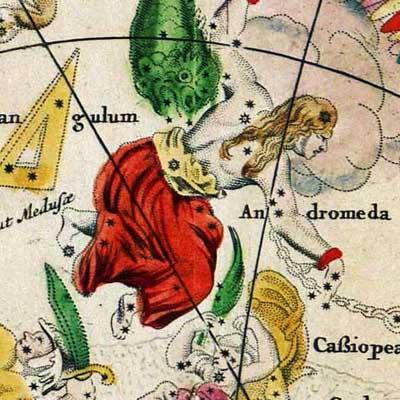| Location: Sydney (AUS) | Sunrise: 05:57 | Sunset: 20:10 | GMT +11 |
| Home
| Moon
| Monitor
| News
| About Me
| Site Map
| Guest Book
| Your browser did not load the style sheet and as a result the web page is not displaying correctly.
- Cause: You use a low speed connection or the Internet is slow at this time. Solution: Hit the Refresh Button of the browser.
- Cause: Your browser is not complying with the cascading style sheet used. Solution: Update your browser. We recommend Internet Explorer (IE) or FireFox.
 Celestial map from the 17th century, by the Dutch Frederik de Wit |
|
Introduction
I hope that this section of my web site will achieve the following:
What is star hopping? Is a method to "navigate" on the sky using very bright stars or easily recognizable patterns. What you need is just a map. If you have a pair of binoculars or a telescope is even better. In each of the highlights I am presenting, there is a recommendation of the minimum equipment. If you don't have a binocular or a telescope, it does not mean that you can not look at the sky, or that you can not find a lot of interesting things on your journey across the sky. What map you need to use? There are quite a few freeware programs available on the net, that are easy to use, and easy to print. I recommend you: Learning star-hopping takes time and practice, so do not expect to become an expert in no time. If you have binoculars or a telescope you also need to become familiar with the sky viewed through the eyepiece of your instrument. Begin your star hop to your intended target by starting with a wider-angle (lower power) eyepiece to show as many guidepost stars as possible. Compare what you see with what is on the map. You may find yourself turning the chart at an angle or even upside down to make it match the eyepiece field. Try to match the patterns on the map with the ones in your eyepiece. Start, of course, with the brighter stars and more obvious patterns. Move the scope slowly from the first field of view toward the next target If there are no bright stars in a direct line to to your target, take a zigzag course to get there. Just follow the stars! Eventualy you will get lost or miss your target. Everyone does, even the more experienced astronomers. But it's the "thrill of the hunt" that makes star-hopping worth the effort. Simply go back to the last recognized field of view and start again.
©Copyright 2026 Gabriel Ditu
|
